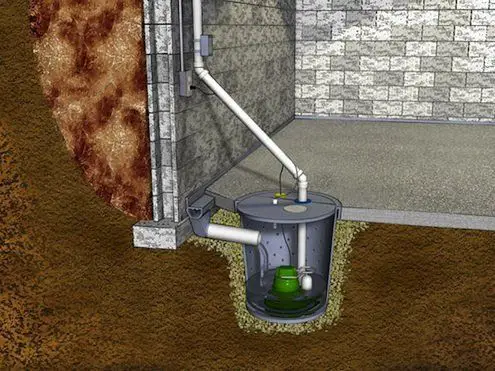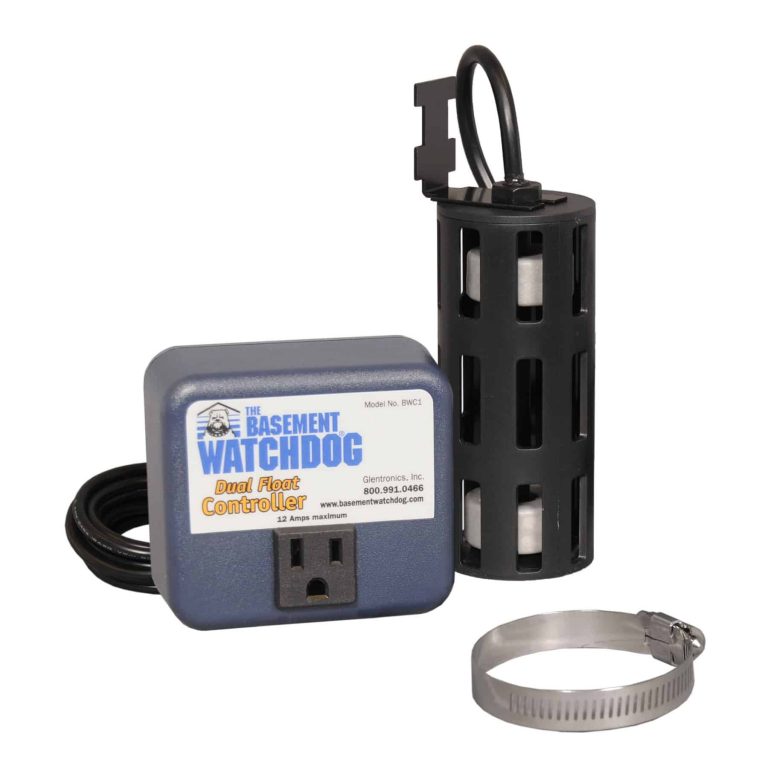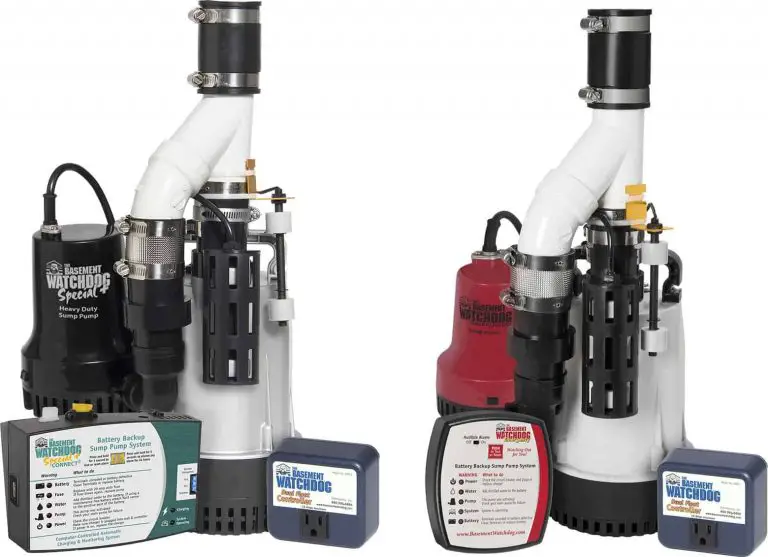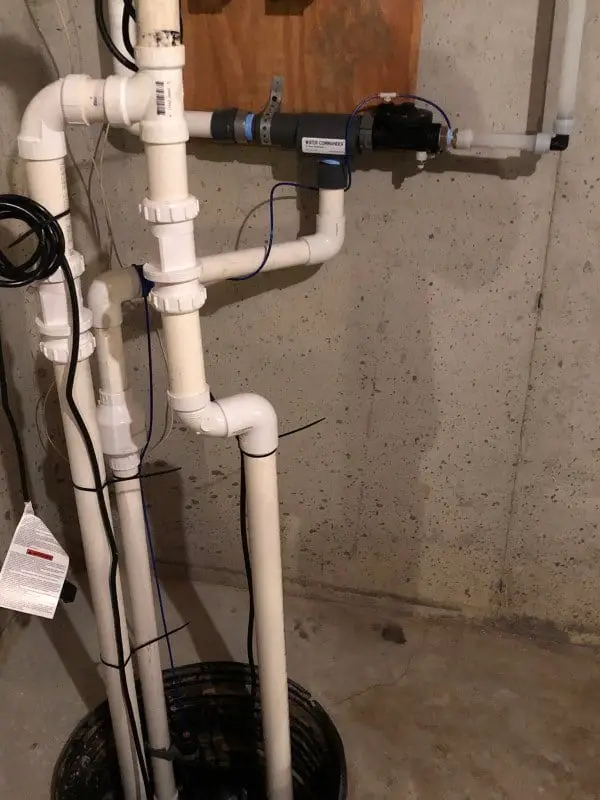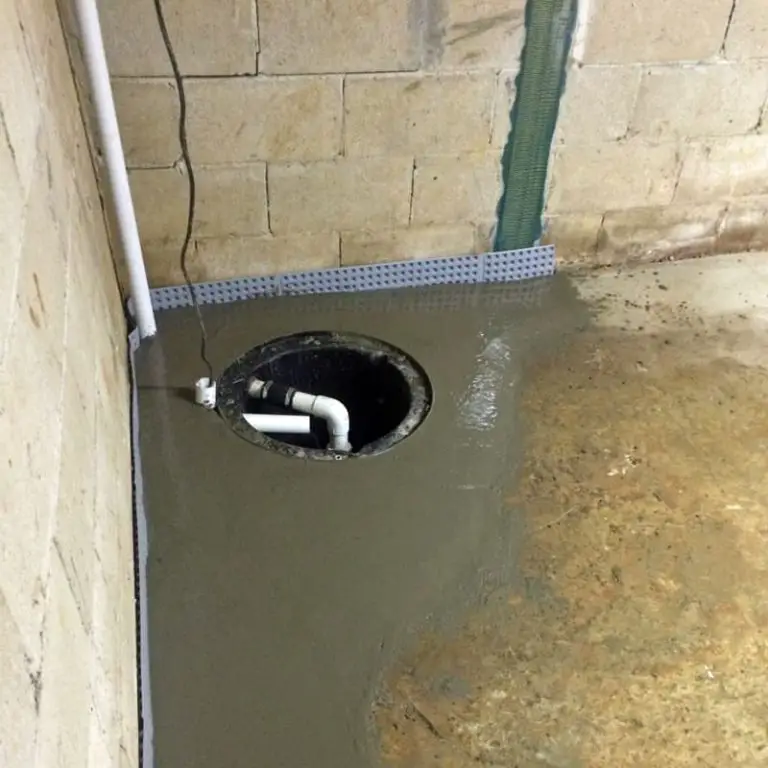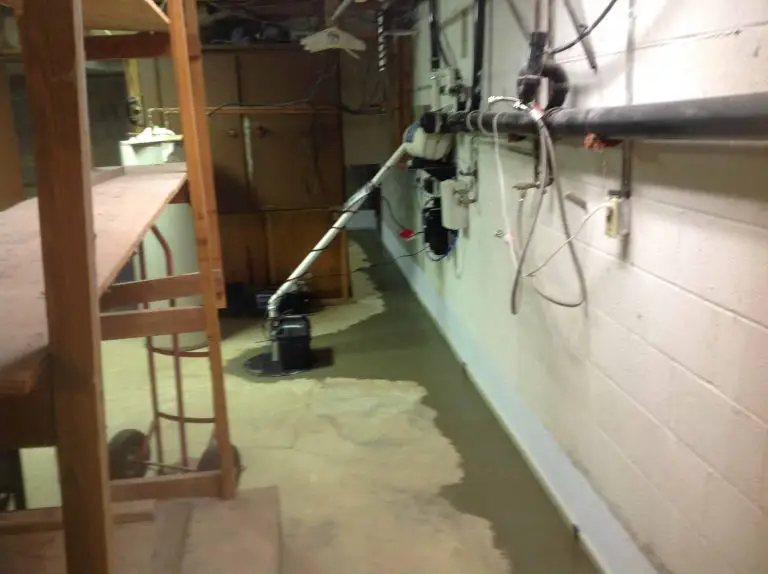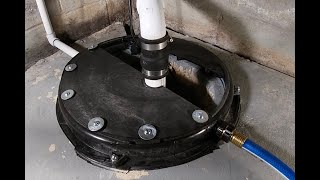Can I Leave a Sump Pump Plugged in
If your basement is prone to flooding, you may be considering purchasing a sump pump. Sump pumps are designed to remove water from your basement before it has a chance to cause damage.
But once you have your sump pump, you may be wondering: can I leave a sump pump plugged in? The short answer is yes, you can leave a sump pump plugged in. Sump pumps are designed to be left on 24/7 in order to keep your basement dry. However, there are a few things you should do in order to ensure that your sump pump is working properly and will continue to work for years to come.
- Unplug the sump pump from its outlet
- Remove the lid from the sump pit
- Take out any debris that may have accumulated in the pit, such as stones or leaves
- Inspect the float switch and ensure that it is not stuck in the “on” position
- If everything looks clear and in good working order, replace the lid on the pit and plug the sump pump back in to its outlet
6 Things Sump Pump Owners NEED to Know
Is It Safe to Leave a Sump Pump Running
If you have a sump pump in your basement, you may be wondering if it’s safe to leave it running. The short answer is yes, it is safe to leave your sump pump running.
However, there are a few things to keep in mind to make sure your sump pump stays in good working condition and doesn’t cause any problems. First, if your sump pump is connected to a power outlet, make sure the cord is not frayed or damaged in any way.
If the cord is damaged, it could overheat and start a fire. Also, be sure to check the float switch on your sump pump regularly.
This switch turns the pump on and off as needed, and if it gets stuck in the “on” position, your pump will run continuously and could overheat. Other than that, there’s not much else you need to do to maintain your sump pump.
Just be sure to keep an eye on it from time to time and make sure everything looks normal. If you have any concerns or notice anything abnormal, contact a plumber or Pump Service Company for assistance.
Can I Unplug My Sump Pump in Winter
If you live in an area where the winters are freezing, you may be wondering if you can unplug your sump pump in winter. The answer is yes, but there are a few things to consider before you do.
First, make sure that your sump pump is properly winterized. This means draining it of all water and lubricating any moving parts.
If your sump pump isn’t properly winterized, it could freeze and break when the temperature drops. Second, think about where your sump pump is located.
If it’s in an unfinished basement or crawlspace, it’s likely that the temperature will stay above freezing even during the coldest weather. However, if your sump pump is located in a garage or shed that isn’t heated, it could freeze if the temperature gets low enough.
Finally, consider whether or not you need your sump pump during the winter months. If your basement doesn’t flood often and you don’t live in an area with heavy rains or snowmelt, you may not need to use your sump pump at all during the winter. In this case, unplugging it and storing it away until springtime might be the best option.
Can You Turn off a Sump Pump
If your home is prone to flooding, you may be considering a sump pump. But can you turn it off when the water level recedes? The answer is yes, you can turn off a sump pump.
However, there are a few things to consider before doing so. For example, if your pump is located in an area that is still wet or damp, it’s best to leave it on until the area has completely dried out.
This will help prevent any mold or mildew from growing inside the pump. Additionally, if your sump pump is connected to a power source, be sure to unplug it before turning it off.
This will prevent any accidental electrocutions from occurring. Finally, once the pump has been turned off, be sure to check the surrounding area for any leaks or cracks that might have developed while the pump was running. If any are found, be sure to repair them before turning the pump back on.
How to Reset a Sump Pump
If your sump pump has stopped working, or if you want to reset it for any reason, follow these steps. First, unplug the sump pump from the power outlet.
Next, remove the cover of the sump pit so that you can access the float switch. The float switch is a large plastic ball that is connected to the pump by a long wire.
Gently lift up on the float switch until it pops out of its housing. Then, press the reset button on the side of the sump pump. Finally, replace the cover on the sump pit and plug in the sump pump to its power outlet.
Sump Pump Running Constantly
If you have a sump pump in your home, you may have noticed that it seems to be running constantly. This can be frustrating, especially if you don’t know why it’s happening.
There are a few reasons why your sump pump might be running constantly, and we’re here to help you figure out what’s going on. First, let’s start with the basics.
A sump pump is typically installed in a basement or crawl space and is used to pump water out of the home in order to prevent flooding. The sump pump is turned on when water levels start to rise and will continue to run until the water level has been lowered back down to a safe level.
Now that we’ve reviewed the basics, let’s take a look at some of the common reasons why your sump pump might be running constantly: 1. Your Home Has Poor Drainage – If your home has poor drainage, this can cause water to build up around your foundation which can eventually lead to flooding.
In order to combat this issue, you’ll need to make sure that your gutters are clean and clear of debris so that they can properly drain water away from your home. You may also want to consider installing an exterior French drain system which will help redirect water away from your foundation before it has a chance to cause problems.
2. There’s A Leak In Your Foundation – If there’s a leak in your foundation, this can also lead to flooding as well as damage to your home over time. If you suspect that there may be a leak in your foundation, it’s important to have it repaired as soon as possible by a professional contractor.
Should Sump Pump Sit on Bricks
A sump pump is a device that is installed in the basement of a home. The purpose of a sump pump is to remove water that has accumulated in the basement, and to prevent flooding.
A sump pump typically sits on a bed of gravel or bricks, which helps to keep the pump from sitting in water. There are several factors to consider when deciding whether or not to install a sump pump in your basement.
If your basement floods frequently, or if you live in an area that is prone to flooding, a sump pump can be a valuable investment. Sump pumps can also be helpful if your basement tends to be damp or humid, as they can help to reduce moisture levels.
Installing a sump pump is relatively simple and can be done by most homeowners. However, it is important to make sure that the pump is properly installed and maintained. Be sure to read the instructions carefully before beginning the installation process, and always consult with a professional if you have any questions or concerns.
How Much Water Should Be in My Sump Pump Pit
If your home is equipped with a sump pump, it’s important to know how much water should be in the pit. This will help ensure that your pump is working properly and that your basement stays dry.
The size of your sump pump pit will dictate the amount of water that should be in it. A general rule of thumb is that you should have about 1 inch of water for every 10 square feet of floor space in your basement.
So, if your basement is 1,000 square feet, you would want approximately 100 gallons of water in the pit. Of course, there are other factors to consider when determining how much water should be in your sump pump pit.
The type of soil around your home, the rainfall patterns in your area, and the age of your home can all affect how much water you need to keep in the pit. If you’re not sure how much water should be in your sump pump pit, it’s best to err on the side of caution and keep a little more than necessary. Too much water won’t hurt anything – but too little could mean disaster for your basement!
How Does Water Get into Sump Pit
A sump pit is a hole or depression in the ground that collects water. The water may come from rainfall, melting snow, or groundwater.
When the pit fills with water, it is pumps to a holding tank or away from the building. Water can enter the sump pit through pipes or drains that are connected to it, or through cracks in the foundation of the building.
Sump pits are typically located in basements, crawlspaces, and other areas where there is a potential for flooding. If you have a sump pit on your property, it is important to keep it clean and free of debris so that it can function properly. You should also check the pump regularly to make sure it is working properly and has enough power to pump the water out of the pit.

Credit: www.basementsystems.ca
Should I Leave My Sump Pump Plugged in All the Time?
No, you should not leave your sump pump plugged in all the time. Doing so could lead to a number of problems, including: 1.
Overheating – If your sump pump is left on for too long, it can overheat and break down. This is especially true if it’s not getting enough air flow.
2. Wearing out prematurely – Like anything else that’s constantly running, a sump pump will wear out faster if it’s left on all the time.
This means you’ll have to replace it sooner than necessary. 3.
Higher electric bills – Leaving your sump pump on 24/7 will obviously result in higher energy costs. So unless you want to see a spike in your electricity bill, be sure to turn it off when it’s not needed.
In general, it’s best to only use your sump pump when there’s actually water present that needs to be pumped out (i.e., during heavy rains or when snow is melting). Otherwise, you should unplug it and store it away until it’s needed again.
Should You Unplug Your Sump Pump?
If you have a sump pump in your home, you may be wondering if it’s necessary to unplug it when the power goes out. The answer is yes, you should unplug your sump pump during a power outage.
While most sump pumps are designed to withstand brief power outages, extended outages can cause serious damage to the pump. During a power outage, the sump pump will continue to run, but without electricity, the pump will eventually overheat and break down. Unplugging your sump pump during a power outage will prevent this from happening and protect your investment.
Can You Just Unplug a Sump Pump?
If your sump pump has failed and you’re considering replacing it, you may be wondering if you can just unplug the old one. The answer is yes, you can unplug a sump pump, but there are a few things to keep in mind before doing so.
First, make sure that the power is turned off to the pump. If the power is still on, there’s a risk of electrocution when disconnecting the pump.
Second, take note of how the pump is installed. Some pumps are installed with threaded connections, while others may have compression fittings.
If your pump has threaded connections, you’ll need to use pipe wrenches or pliers to loosen them before disconnecting the pump. Compression fittings can simply be unscrewed by hand.
Once the power is off and the connections are loosened, you can carefully remove the sump pump from its position. Be careful not to damage any pipes or fittings as you do so. Once the old pump is out, clean up any debris in the pit before installing the new one.
What Happens If I Shut off My Sump Pump?
If you shut off your sump pump, the water in your basement will start to rise. Eventually, it will reach a level where it will start to seep into your home through cracks in the foundation or walls. If the water level gets high enough, it can cause serious damage to your home and even put your family at risk for drowning.
Conclusion
Sump pumps are an important part of keeping your home dry and free of water damage, but you may be wondering if it’s okay to leave them plugged in all the time. The short answer is yes, you can leave a sump pump plugged in as long as it is getting power and functioning properly.
However, there are a few things to keep in mind if you choose to do this. First, make sure that your sump pump is equipped with a battery backup in case of a power outage.
Second, check on your sump pump periodically to make sure that it is still working properly and has not become clogged or otherwise damaged. If everything looks good, then you can rest easy knowing that your home is protected from flooding even when you’re not there.

